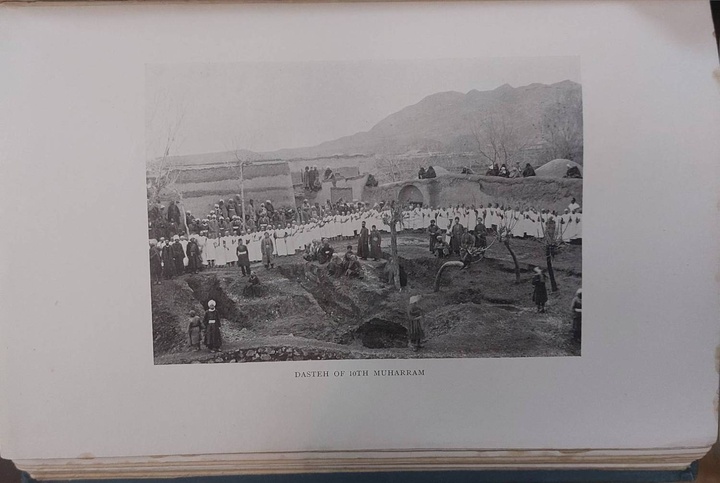Two century-old English travelogues preserved at AQR’s Central Library offer a rare glimpse into how foreign observers viewed Iranian Muharram rituals during the Qajar era (1789-1925).
The eighth chapter of “Persia and Its People” by Ella Sykes (1910) and the twenty-fourth chapter of “Persia As It Is” by C.J. Wills (1886) both focus on the emotional intensity and complexity of mourning ceremonies in Muharram.
These works, written in the form of travel memoirs by two British authors during the Qajar period, are housed in the Rare Books section of the library’s printed collection.
In honor of the martyrdom anniversary of Imam Hussein (3rd Shia Imam and grandson of Prophet Muhammad (PBUH)), librarian Ali Mohajerani conducted a comparative analysis of the two chapters to explore how these foreign writers perceived the month of Muharram and Iranian mourning customs.
“Both authors describe Muharram as a nationwide movement that engages all social classes, from the poor to the wealthy”, he stated.
“They emphasize the fervor of the mourning rituals and their profound emotional impact on the people”, the librarian added.
According to the expert, “Ta’zieh, the passion play reenacting the tragedy of Karbala, is identified as the heart of the ceremonies in both accounts”.
“Sykes compares Ta’zieh to the Passion of Christ in Germany, stating that “no other drama in the world moves its audience to tears like this one” ”, Mohajerani noted.
“Wills recounts witnessing a Ta’zieh performance in a tent outside the palace of Zill al-Sultan (the eldest son of Naser al-Din Shah of Qajar dynasty) in Isfahan, noting the dramatic staging with horses and mounted actors”, he continued.
The librarian at AQR’s Central Library went on to say, “Both writers highlight key elements such as the chants of “Ya Ali” and “Ya Hussein,” chest-beating in a sign of grief, and widespread public weeping”.
“They also note the black clothing worn by people and the darkened appearance of cities during Muharram as a hallmark of Iranian mourning culture”, he said.
“Sykes further links the Karbala narrative to Iranian history by referencing Imam Hussein’s marriage to the daughter of the last Sassanid king”.
“Wills, however, focuses solely on the theatrical aspects of the ceremonies in Isfahan”.
“Together, these accounts reveal that the core elements of Qajar-era Muharram rituals—Ta’zieh, chest-beating, and mass social participation—were so powerful that they left a lasting impression on foreign observers of all backgrounds”, Mohajerani concluded.
As Sykes wrote, “These tears are not just for a thousand-year-old history—they are for the Iran of today.”

Two 19th-century British accounts, kept at the library of Astan Quds Razavi, highlight the emotional depth and social reach of Iranian mourning traditions for Muharram during Qajar dynasty.
News Code 6787

Your Comment